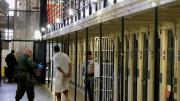In the Reagan era, the federal government ran budget deficits almost as big as the current account deficit is today—at their peak, on the order of 6 percent of GDP. At the time, economists worried that government borrowing would suck up most of the funds available for investment in domestic productive capacity—the engine of future economic growth. The concept was called “crowding out,” and in a closed economy, that is exactly what would have happened: government borrowing would have crowded private borrowers out of the lending market. But that didn’t happen to the extent expected. Instead, the United States began running current account deficits of 2 or 3 percent as capital flowed in from abroad. “The positive side of financial integration and globalization of capital markets,” says Jeffry Frieden, Stanfield professor of international peace, “is that it makes it possible for governments, private firms, and individuals to borrow from anywhere. Mortgage holders in Belgium can finance their mortgages in Germany, Japan, or the United States. A Belgian mortgage broker could then sell those mortgages on the global financial markets. And they do.” The pool of capital available to governments and individual borrowers has expanded dramatically with financial globalization.
Federal deficits thus contribute to current account deficits, but not on a one-to-one basis. “The spillover effect might be 50 percent or less,” explains Benjamin Friedman, Maier professor of political economy and author of Day of Reckoning, a 1988 analysis of the consequences of President Reagan’s economic policy. Back then, “If the government deficit was 4 percent of the national income, and the foreign deficit was about 2 percent of the national income, eliminating the government deficit would have balanced the foreign account also. These days, the federal deficit is on the order of 2 percent of GDP or less,” he notes, “while the current account deficit is something like 6.5 percent of GDP.” Private borrowing, rather than federal borrowing, explains most of the current account deficit today. “Narrowing the government deficit by 2 percent might therefore cause the current account to go down by just 1 percent,” to 5.5 percent of GDP.
This does not mean we should ignore the federal deficit, Friedman says. Cyclical deficits to stimulate the economy when unemployment is high are fine, but we are at a high point in the business cycle: “We are at full employment, maybe more than full employment.” Furthermore, he notes, we have large liabilities ahead of us associated with an aging workforce, due not so much to Social Security as to the rising healthcare costs covered by Medicare. “There is absolutely no excuse to be running a government deficit of even 2 percent in the federal account, as we are doing now, when we are at full employment and the retirement of the baby-boom generation is right around the corner,” he charges. “That is irresponsible.” Even so, he emphasizes, eliminating the government deficit “is not going to solve the current account problems.”





